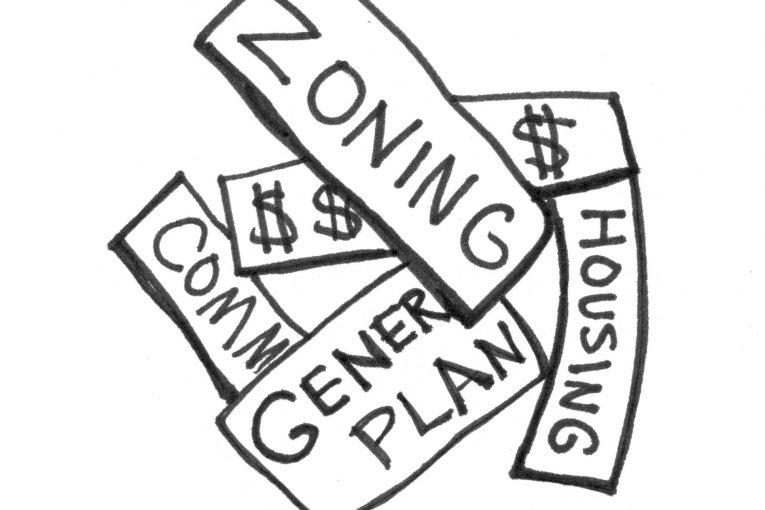
(Editor’s Note: The author was Vice Chairman for nearly a decade on a Sacramento County Planning Advisory Council)
SACRAMENTO, CA – Zoning is a series of (necessarily) false promises, made in (unnecessarily) unclear zoning codes, at least as California’s local governments practice it now.
While local zoning codes are as big as unabridged dictionaries, it’s worth remembering that Haussman rebuilt Paris for Napolean III with the guidance of a six-page guide,,,and he got Paris!
Local governments in California typically have “use-based” zoning, specifying that we’ll build the residences here (on a specific site), the commerce there, multi-family yonder, etc.
The map specifying these decisions typically originates in public meetings where civic minded citizens huddle to decide whether a particular parcel will be apartments, or a shopping center, or offices, or something else. These meetings often occur decades before any building occurs.
This writer has been to several such meetings. Only one discussed the costs and consequences of the zoning decisions. In one meeting an elderly woman wished for a subway from her neighborhood to the downtown office where she worked–extremely expensive, and without the support of riders who might pay fares.
But that’s literally how silly decisions are when they’re made without regard to costs or consequences.
Questions about use-based zoning: If developing that particular parcel is as much as decades away, will there be a market for the use decided then?
In a current example, since remote work increased, there’s currently a glut of offices. Could we have anticipated that? More importantly: will banks agree to finance the construction of the use decided?
The answer is not just “We don’t know!” it’s “We can’t know!” The future is at least uncertain. All of the debate about the use for a particular parcel is at least a waste of time, if not an outright scam. Even worse, the public grows to expect the use designated, and, if some future builder wants to vary from that use, citizens are disappointed.
At least half of the many zoning hearings this writer attended exist to allow citizens to vent their disappointment—and the vast majority of such complaints were completely ignored.
The false promise of use-based zoning is the source of some large fortunes in the Central Valley.
When land speculators purchase—or more likely option—agricultural land for a few thousand dollars an acre, then persuade the local government to change the zoning to uses like residences or commerce, the price to builders (the people who actually build out the former agricultural land) is often as much as fifty or a hundred times what the speculator paid. There are even ways the speculators avoid paying income tax on that enormous profit.
There’s a cottage industry of attorneys, engineers, and other consultants constantly lobbying for zoning changes. Not only can zoning decisions not accurately anticipate the future, but also that uncertainty is a source of enormous profits.
In Germany, the developers have to sell the agricultural land to the local government at the ag land price, then re-purchase it at the ok-for-development land price.
All that 5,000–10,000 percent profit inures to the benefit of the local government. And Germans have some very nice local amenities. For example, the arts budget for the City of Berlin exceeds the National Endowment for the Arts for the U.S. of A.
There are alternatives to the uncertainty of use-based zoning. Form-based zoning does not specify the use, instead focusing on the size of the building. Build the big buildings in this spot, the medium-sized ones over there and the small ones yonder is what form-based zoning says.
The use can even be mixed. One added bonus: pedestrian-friendly mixed-use cuts congestion and require roughly half of the vehicle miles traveled of conventional suburban, single-use sprawl.
The plan for (Sacramento Citrus Heights area) Sunrise Mall’s revamp is an excellent example of mixed-use. Residences and commerce would coexist, and with enough residents, the commerce would thrive. With mixed-density (single- and multi-family) the Sunrise Mall neighborhood could even accommodate a range of different incomes.
Unfortunately, the conspiracy of mediocrity wants to make business-as-usual the development pattern for that mall, with drive-through restaurants dominating the streetscape rather than residences that could patronize the local shops. The ball is in Citrus Heights’ court now.